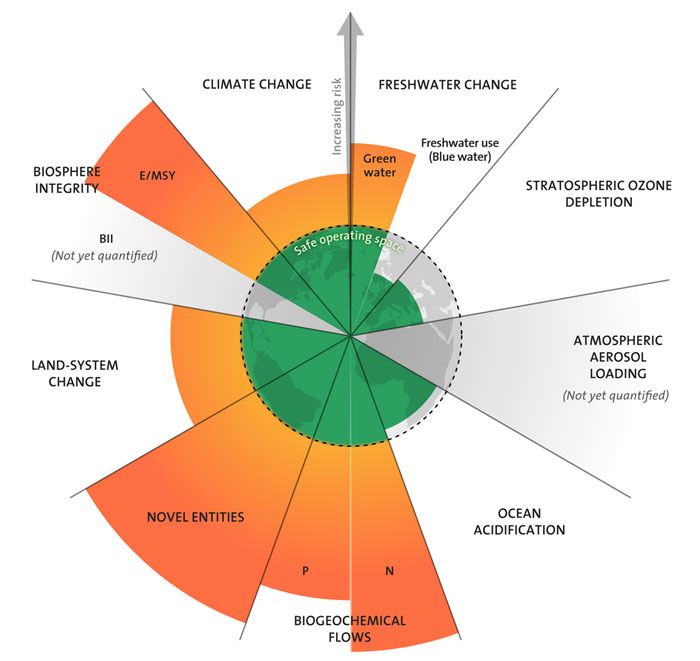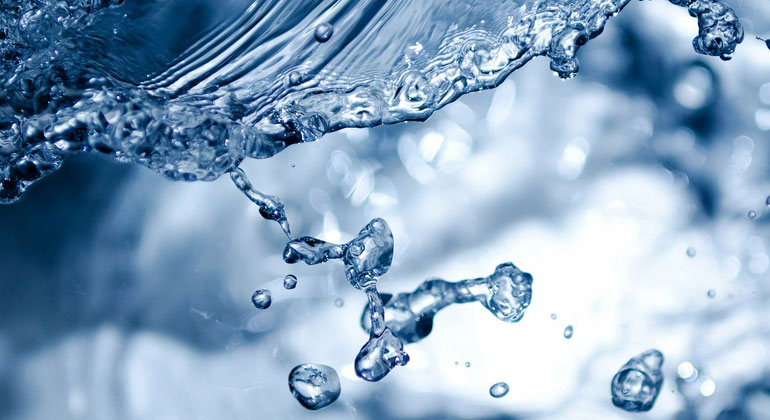Planetary boundaries update: freshwater boundary exceeds safe limits
A reassessment of the planetary boundary for freshwater indicates that it has now been transgressed, according to an international team of researchers led by the Stockholm Resilience Centre and including the Potsdam Institute for Climate Impact Research. This conclusion is due to the inclusion of “green water” – the water available to plants – into the boundary assessment for the first time.
“Water is the bloodstream of the biosphere. But we are profoundly changing the water cycle. This is now affecting the health of the entire planet, making it significantly less resilient to shocks,” says lead author Lan Wang-Erlandsson from the Stockholm Resilience Centre (SRC) at Stockholm University.

The planetary boundaries framework was first published in 2009 under the leadership of Johan Rockström – at that time Director of the SRC, today Director of the Potsdam Institute, and co-author of the new study. The planetary boundaries demarcate the safe operating space for humanity. Water is one of the nine regulators of the state of the Earth system, and is the sixth boundary that scientists have assessed as being transgressed. Other transgressed boundaries are: climate change, biosphere integrity, biogeochemical cycles, land system change and, in 2022, novel entities, which includes plastic and other human-made chemicals.
Distinction between ‘blue water’ and ‘green water’
Until now, the water boundary had been considered to be within the safe zone. However, the original freshwater boundary only focused on extraction of water in rivers, lakes, and groundwater – known as “blue water”. Now researchers have explored the water boundary in more detail. The authors argue that previous assessments did not sufficiently capture the role of green water and particularly soil moisture for ensuring the resilience of the biosphere, for securing land carbon sinks, and for regulating atmospheric circulation.
“The Amazon rainforest depends on soil moisture for its survival. But there is evidence that parts of the Amazon are drying out. The forest is losing soil moisture as a result of climate change and deforestation,” says Arne Tobian, second author and PhD candidate at the Stockholm Resilience Centre and Potsdam Institute for Climate Impact Research. “These changes are potentially pushing the Amazon closer to a tipping point where large parts could switch from rainforest to savannah-like states,” he adds.
And it is not just in the Amazon. This phenomenon is global. Everywhere, from the boreal forests to the tropics, from farmlands to forests, soil moisture is changing. Abnormally wet and dry soils are increasingly commonplace.
“This latest scientific analysis shows how we humans might be pushing green water well outside of the variability that Earth has experienced over several thousand years during the Holocene period”, concludes Rockström. “This is serious and a threat to life support systems on Earth, caused by global warming, unsustainable land management and destruction of nature.”
- „A planetary boundary for green water“ Nature Reviews Earth & Environment. https://doi.org/10.1038/s43017-022-00287-8








